Xiaomi Redmi Note 9 Pro
$148 | 13299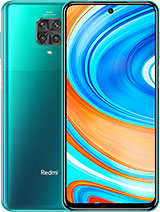
- 6.67" 1080x2400 pixels
- 64MP 2160p
- 6GB RAM Snapdragon 720G
- 5020mAh Li-Po
Phone Finder
- Acer alcatel Allview Amazon Amoi Apple Archos Asus AT&T Benefon BenQ BenQ-Siemens Bird BlackBerry Blackview BLU Bosch BQ Casio Cat Celkon Chea Coolpad Cubot Dell Doogee Emporia Energizer Ericsson Eten Fairphone Fujitsu Siemens Garmin-Asus Gigabyte Gionee Google Haier HMD Honor HP HTC Huawei i-mate i-mobile Icemobile Infinix Innostream iNQ Intex itel Jolla Karbonn Kyocera Lava LeEco Lenovo LG Maxon Maxwest Meizu Micromax Microsoft Mitac Mitsubishi Modu Motorola MWg NEC Neonode NIU Nokia Nothing Nvidia O2 OnePlus Oppo Orange Oscal Oukitel Palm Panasonic Pantech Parla Philips Plum Posh Prestigio QMobile Qtek Razer Realme Sagem Samsung Sendo Sewon Sharp Siemens Sonim Sony Sony Ericsson Spice T-Mobile TCL Tecno Tel.Me. Telit Thuraya Toshiba Ulefone Umidigi Unnecto Vertu verykool vivo VK Mobile Vodafone Wiko WND XCute Xiaomi XOLO Yezz Yota YU ZTE
Xiaomi Redmi Note 9 Pro Summary
Xiaomi's Redmi Note 9 series of smartphones is causing users to be more confused than ever, with a total of up to 4 similar models: Redmi Note 9, Redmi Note 9s, Redmi Note 9 Pro and Redmi Note 9 Pro Max.
Redmi Note 9 Pro is available in India in two memory configurations - 4GB RAM + 64GB storage (Rs. 12,999) and 6GB RAM + 128GB storage (Rs. 14,999). Compared to the Note 9, this smartphone can be considered a slight upgrade in camera hardware and charging speed - two of the most important factors today.
Camera
Since the Redmi Note 9 Pro has many similarities with the Redmi Note 9s, I want to talk about the differences first. The hardware upgrade takes place on both the front and rear cameras, the most noticeable being the resolution: the main camera increases from 48MP to 64MP, while the selfie camera resolution increases from 16MP to 32MP. Aperture also varies, and in certain environments, the image quality will vary.
The biggest benefit of higher resolution is when we take photos in bright light. Photos taken by the Redmi Note 9 Pro are rich in detail. The contrast is good, the color range is wide, the AI mode does boost colors of the photos, but in most cases, it's still natural. For taking regular photos, you only need to shoot in the default mode, producing 16MP photos rather than 64MP, basically, their quality is the same except and 64MP images need a longer time to save on the phone’s storage.
However, things are not much improved on the Redmi Note 9 Pro when it comes to low-light photography. Bright areas still lack control, resulting in loss of detail around. Night Mode, on the other hand, works well, but users must keep their hands steady, or preferably tripod, not practical if you want to catch a moment.
5MP resolution, supporting autofocus with a minimum distance of 2cm are highlights of the macro camera of Redmi Note 9 Pro. Overall, the macro photo of this smartphone proved to be superior to rivals in the price range from Samsung or Realme.
Taking on the role of the wide-angle shooting of Redmi Note 9 Pro is still an 8MP camera, f / 2.2 aperture. In general, you should still only use this camera in bright enough conditions to keep details. The inherent weakness of the wide-angle camera, in general, is still the low contrast range, and the one on the Redmi Note 9 Pro is no exception.
The selfie camera of the Redmi Note 9 Pro is doubled in resolution from 16MP to 32MP, with a slightly larger f / 2.3 aperture promising better low-light photography. In fact, the selfie photo has been improved in bright tones, making the subject's face stand out more, without feeling dull like Redmi Note 9s.
Faster charging rate
Still equipped with a 5020 mAh battery, the thing that Redmi Note 9 Pro makes Redmi Note 9s users jealous of is the charging speed, when the Redmi Note 9 Pro supports a maximum charging capacity of up to 30W instead of 18W. Inside the box, Xiaomi comes with a 33W charger, and it takes only 1 hour 20 minutes to fully charge the battery of this phone from 0%
In our battery test, it is not surprising that the Redmi Note 9 Pro has nearly identical results to the Redmi Note 9s, when the two devices have similar screen sizes, sharing the same software and the same page. with a Snapdragon 720G chip.
Display
Redmi Note 9 Pro has a 6.67-inch screen, IPS LCD panel with Full HD + resolution. The size, brightness, and display quality of this screen are basically identical to the Redmi Note 9s I have reviewed, so I won't need to say more.
Instead, the most noticeable point is that the Redmi Note 9 Pro has fixed the HDR display error I've encountered on the Redmi Note 9s. The wide contrast range is very clear, colors also become more vivid and soulful, instead of pale gray as before.
Unfortunately, the Redmi Note 9 Pro still only has a 60Hz refresh rate instead of 90Hz. According to Xiaomi, there are still not too many apps that can utilize the high refresh rate, users will not be able to recognize the difference and it is not worth trading for battery life. With the experience of the Realme 6 Pro, I think that Xiaomi's view is not entirely true: there is indeed a difference, the battery life is lowered but not too significant. Xiaomi has also equipped faster-charging capability for the Redmi Note 9 Pro so that won’t be a problem.
Performance is good with Snapdragon 720G
The "soul" of the Redmi Note 9 Pro is still an 8nm Qualcomm Snapdragon 720G chip. The version we have on hands now has 6GB of RAM.
Initially, when evaluating the Redmi Note 9s, I thought that because the Snapdragon 720G was too new and it was not optimized for gaming. However, with the Redmi Note 9 Pro, the graphics settings when playing familiar games have not changed, although the average fps and frame rate are all high.
With the two popular game titles, PUBG Mobile and Dead Trigger 2, you can’t set the highest settings on the Redmi Note 9 Pro. PUBG Mobile is locked at 30fps with HD resolution, unable to select HDR while Dead Trigger 2 can only play in High 60fps graphics instead of Ultra.
With 6GB of RAM, apps won’t have to refresh on the background compared to the Redmi Note 9s with only 4GB of RAM.
Xiaomi Redmi Note 9 Pro Full Specifications
- Dollas $148 Buy in Flipkart >
- Rupee ₹13299 Buy in Flipkart >
- Technology GSM / HSPA / LTE
- 2G bands GSM 850 / 900 / 1800 / 1900 - SIM 1 & SIM 2
- 3G bands HSDPA 850 / 900 / 1700(AWS) / 1900 / 2100
- 4G bands 1, 2, 3, 4, 5, 7, 8, 20, 28, 38, 40, 41
- Speed HSPA 42.2/5.76 Mbps, LTE-A
- Announced 2020, April 30
- Status Available. Released 2020, May 05
- Dimensions 165.8 x 76.7 x 8.8 mm (6.53 x 3.02 x 0.35 in)
- Weight 209 g (7.37 oz)
- Build Glass front (Gorilla Glass 5), glass back (Gorilla Glass 5), plastic frame
- SIM Dual SIM (Nano-SIM, dual stand-by)
- Type IPS LCD capacitive touchscreen, 16M colors
- Size 6.67 inches, 107.4 cm2 (~84.5% screen-to-body ratio)
- Resolution 1080 x 2400 pixels, 20:9 ratio (~395 ppi density)
- Protection Corning Gorilla Glass 5
- OS Android 10; MIUI 11
- Chipset Qualcomm SM7125 Snapdragon 720G (8 nm)
- CPU Octa-core (2x2.3 GHz Kryo 465 Gold & 6x1.8 GHz Kryo 465 Silver)
- GPU Adreno 618
- Card slot microSDXC (dedicated slot)
- Internal 64GB 6GB RAM, 128GB 6GB RAM
- UFS 2.1
- Modules 64 MP, f/1.9, 26mm (wide), 1/1.72", 0.8µm, PDAF 8 MP, f/2.2, 119° (ultrawide), 1/4.0", 1.12µm 5 MP, f/2.4, (macro), 1/5.0", 1.12µm, AF 2 MP, f/2.4, (depth)
- Features LED flash, HDR, panorama
- Video 2160p@30fps, 1080p@30/60/120fps, 720p@960fps
- Modules 16 MP, f/2.5, (wide), 1/3.1" 1.0µm
- Features HDR, panorama
- Video 1080p@30/120fps
- Loudspeaker Yes
- 3.5mm jack Yes
- WLAN Wi-Fi 802.11 a/b/g/n/ac, dual-band, Wi-Fi Direct, hotspot
- Bluetooth 5.0, A2DP, LE
- GPS Yes, with A-GPS, GLONASS, GALILEO, BDS
- NFC Yes
- Infrared port Yes
- USB 2.0, Type-C 1.0 reversible connector
- Sensors Fingerprint (side-mounted), accelerometer, gyro, proximity, compass
- Non-removable Li-Po 5020 mAh battery
- Charging Fast charging 30W
- Colors Tropical Green, Glacier White, Interstellar Gray
Xiaomi Redmi Note 9 Pro News
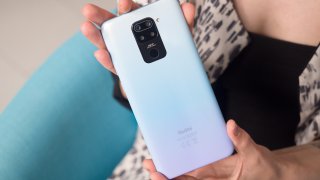
Mobile - Jul 28, 2020
10 Best Xiaomi Phone 2020 In India From Budget To High-End Segments
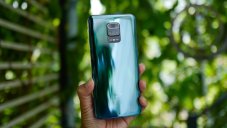
Mobile - Jul 23, 2020
Redmi Note 9 Pro: Specifications, Price, And Review
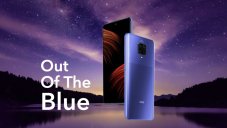
Mobile - Jul 07, 2020
POCO M2 Pro Goes Official In India For Rs. 13,999: SD720G & 48MP Quad Cam
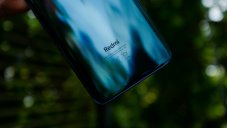
Mobile - May 05, 2020
Redmi Note 9 Pro Sales In India Finally Resumes On Amazon.in & Mi.com
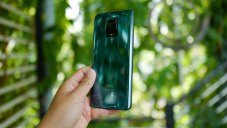
Mobile - Apr 12, 2020











